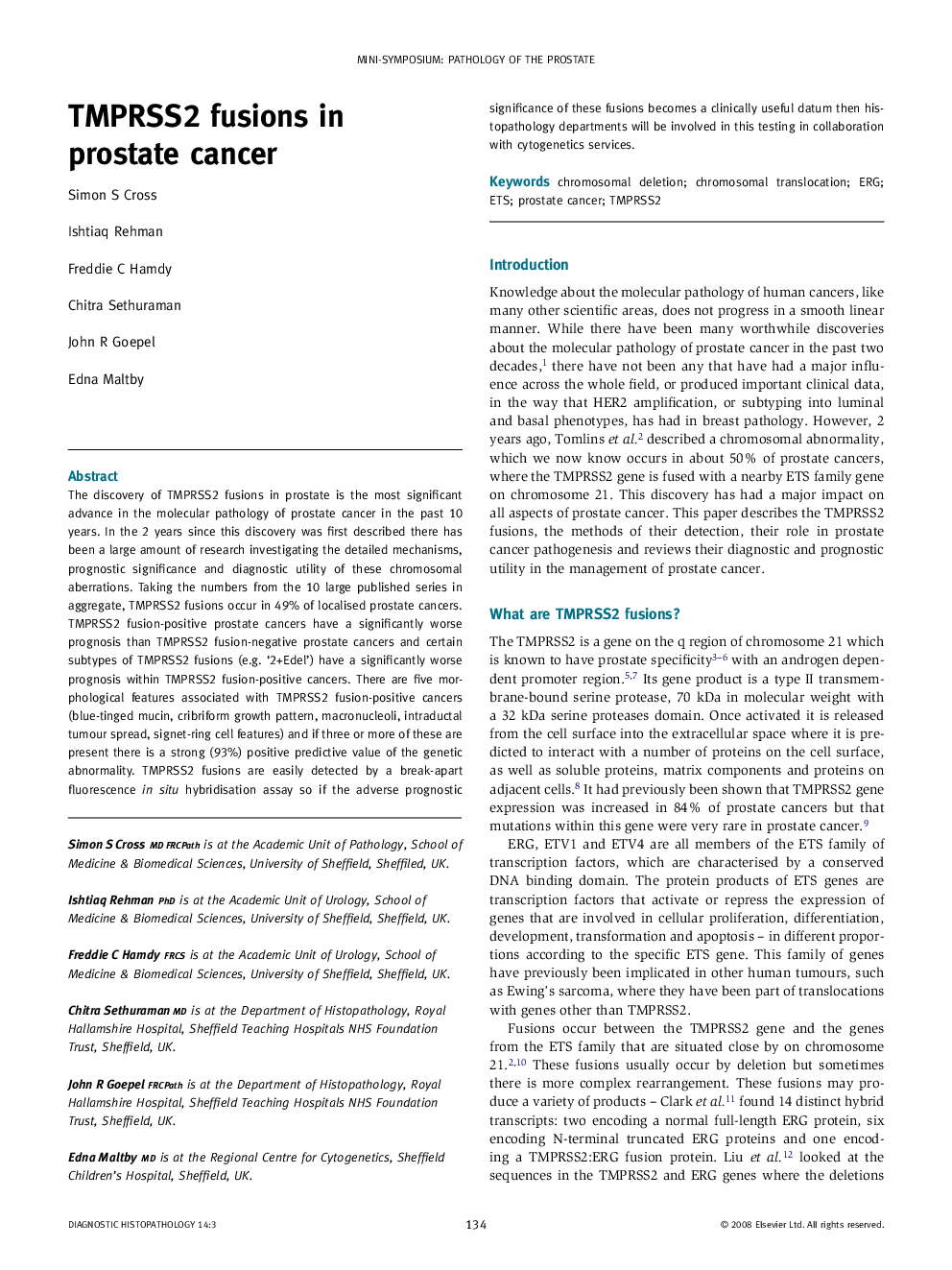| Article ID | Journal | Published Year | Pages | File Type |
|---|---|---|---|---|
| 4131765 | Diagnostic Histopathology | 2008 | 5 Pages |
The discovery of TMPRSS2 fusions in prostate is the most significant advance in the molecular pathology of prostate cancer in the past 10 years. In the 2 years since this discovery was first described there has been a large amount of research investigating the detailed mechanisms, prognostic significance and diagnostic utility of these chromosomal aberrations. Taking the numbers from the 10 large published series in aggregate, TMPRSS2 fusions occur in 49% of localised prostate cancers. TMPRSS2 fusion-positive prostate cancers have a significantly worse prognosis than TMPRSS2 fusion-negative prostate cancers and certain subtypes of TMPRSS2 fusions (e.g. ‘2+Edel’) have a significantly worse prognosis within TMPRSS2 fusion-positive cancers. There are five morphological features associated with TMPRSS2 fusion-positive cancers (blue-tinged mucin, cribriform growth pattern, macronucleoli, intraductal tumour spread, signet-ring cell features) and if three or more of these are present there is a strong (93%) positive predictive value of the genetic abnormality. TMPRSS2 fusions are easily detected by a break-apart fluorescence in situ hybridisation assay so if the adverse prognostic significance of these fusions becomes a clinically useful datum then histopathology departments will be involved in this testing in collaboration with cytogenetics services.
